Last updated on March 24th, 2022
Our site is reader supported, this means we may earn a small commission from Amazon and other affiliates when you buy through links on our site.
A lush and stunningly manicured lawn is the envy of every homeowner. But with a few tips, you can maintain your lawn to the same success rate as even the most advanced and seasoned gardeners. The best part about lawn care is that there are things you can do every season to bring your lawn back even if it seems like things are spiralling out of control. If you have a brown lawn you can water it in the summer and reseed. If your lawn has been trampled to death because of seasons of use, you can spike it to aerate it, remove moss and thatch with a scarifier and so much more.
1. Give it room to breath by aerating your lawn
Your lawn actually needs room to breathe and the more compact it becomes, the harder it will be for your lawn to grow well. In fact, compact grass is usually what results in bare patches throughout the summer, that turn into large muddy patches in the winter and gives way to weeds in spring.
One of the best things you can do to help prevent this problem is to aerate your lawn by using a garden fork and pushing it approximately 10cm deep into your soil, rocking back and forth on the handle ever so gently, and repeating this process about every 10cm. When you do this the prongs of the garden fork open up the soil, and by opening up the soil you let the roots breathe. When this happens the grass is able to regrow successfully.
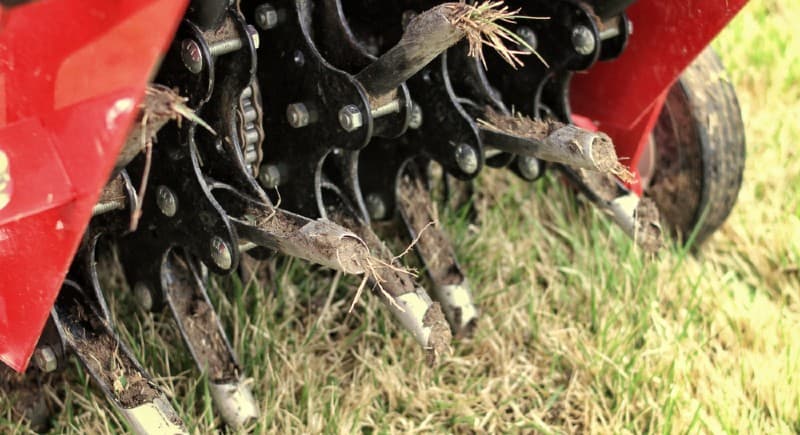
Depending on how regularly your lawn is used, you might need to do this every year, but in the end, you will be much happier with the result. If you are serious about aerating your lawn you can even by machine to do the job for you. These are available in both manual and powered forms.
You can learn how and when to aerate your lawn in our handy guide by clicking here
You can see our latest recommendation for some of the best lawn aerators in this guide
2. Scarify your lawn to remove moss and thatch
If you have problems with moss and thatch building up on your lawn then it’s a good idea to scarify your lawn in spring or autumn using a scarifier. A scarifier uses blades (or tines) to penetrate deep into your lawn and remove the moss and thatch. This build-up often prevents water and nutrients from reaching the grass roots.
Read our guide on how to scarify your lawn here
3. Cover the bare parts with new turf or re-seed bare patches
If you notice you have bare patches of lawn, get some new turf and cut it to fill the empty areas. Reshaping your lawn with sections of turf can alleviate gaps, and ensure that you have a uniform height for your lawn while also helping to give a uniform appearance.
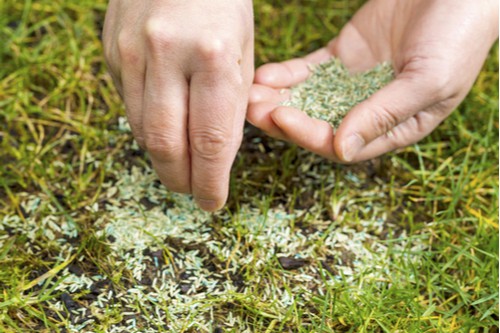
You can also choose to re-seed bare patches or just re-seed the whole lawn to thicken the overall lawn up.
Learn more about how to repair brown patches on your lawn in this guide by clicking here
4. Mow your lawn at the correct height and leave it a little shorter over winter
Similarly, once you have filled in bare patches and they have grown together with the existing lawn, don’t forget to mow. In the summer you should leave the lawn a little bit higher than you do in the winter, between 5cm and 10cm. The reason behind this is that taller lawns are less prone to drought damage.
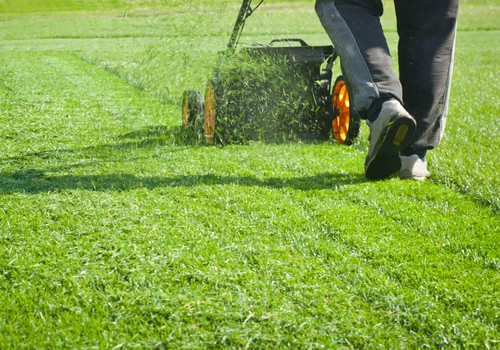
With sharp, well-maintained mower blades you should cut your lawn at least once a week during the summer and then cut that in half to once every two weeks for all the other seasons until around November when you can give your mower a good clean and store it away until spring.
This trimming is important because it encourages the roots to spread out and when they do that they naturally it helps to block out weeds that are trying to fight for space. They help fill in any gaps in your lawn so that you don’t regularly have to cover in bare patches.
Top tip – Every now and again, use your mower without the box and return the grass clippings to the lawn. This returns essential nutrients back to the lawn and if you want those stripes on the lawn you will also need a mower with a roller attached.
5. Manicure the edges
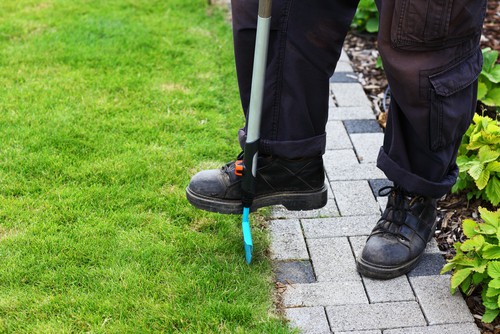
The simple act of edging along the perimeter will go a long way towards achieving the look you want with your garden. With some long-handled shears or lawn edgers, you can prevent your grass from growing into your borders, taking over your paths, or spreading between the cracks of your paving stones. This will give a neat and tidy appearance to your garden and will help your lawn to maintain a perimeter.
Check out some of our top recommended lawn edgers in this review roundup
6. Remove any weeds and apply a lawn weed and feed
Make sure you remove any weeds as well. Regularly mowing and seeding your lawn will go a long way towards helping the lawn fight off the weeds without your help. However, you still should remove things like dandelions or clovers when you see them because they will spread very quickly.
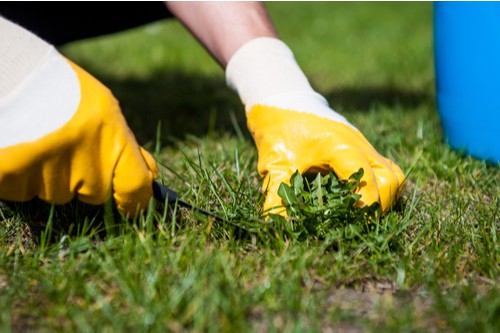
Consider treating your lawn with a lawn weed and feed in spring and autumn every year to help control weeds and feed the lawn at the same time.
7. Give it Food
We so often take steps to feed our plants, making sure that they get the fertiliser they need, but our lawn gets neglected more often than not. If you have a large lawn, you can find lawn feeders that have wheels and will easily spread out the fertiliser across a larger portion as you push it up and down the lawn.
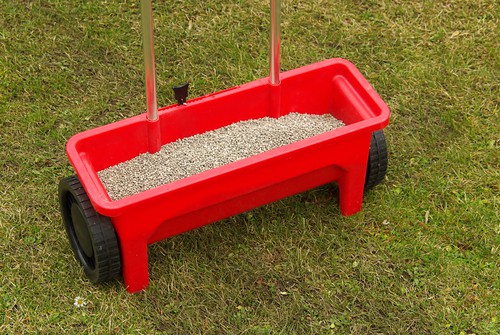
When you see that rain is scheduled in your upcoming weather, apply your fertiliser so that it gets washed into the lawn immediately. If you apply the fertiliser on top of the lawn and it doesn’t rain, it can burn the grass and so would need to be watered in manually. This is something that you should do in the spring and again in the middle of summer. Within about one week after fertilising, you will see a noticeably greener lawn.
See our top recommended lawn feeds here and how to feed a lawn in this guide
8. Water your lawn
Water is just as important as food. When your lawn is new and younger, you need to water it much more thoroughly. In the warmer weather, maybe leave your hose on or your sprinklers running for an hour in the evening. During any prolonged warm weather, your lawns will need extra water to combat the heat. If you don’t water them, the lawn will actually survive but it won’t turn green until autumn.
Remember that if there is a water shortage then this step should be missed and your lawn will recover. We often take water for granted so let’s not waste it
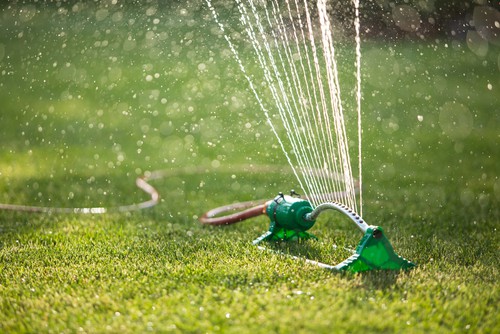
Overall, doing these simple techniques throughout the year takes very little effort but it can result in a stunning lawn that will make all of your neighbours jealous.


